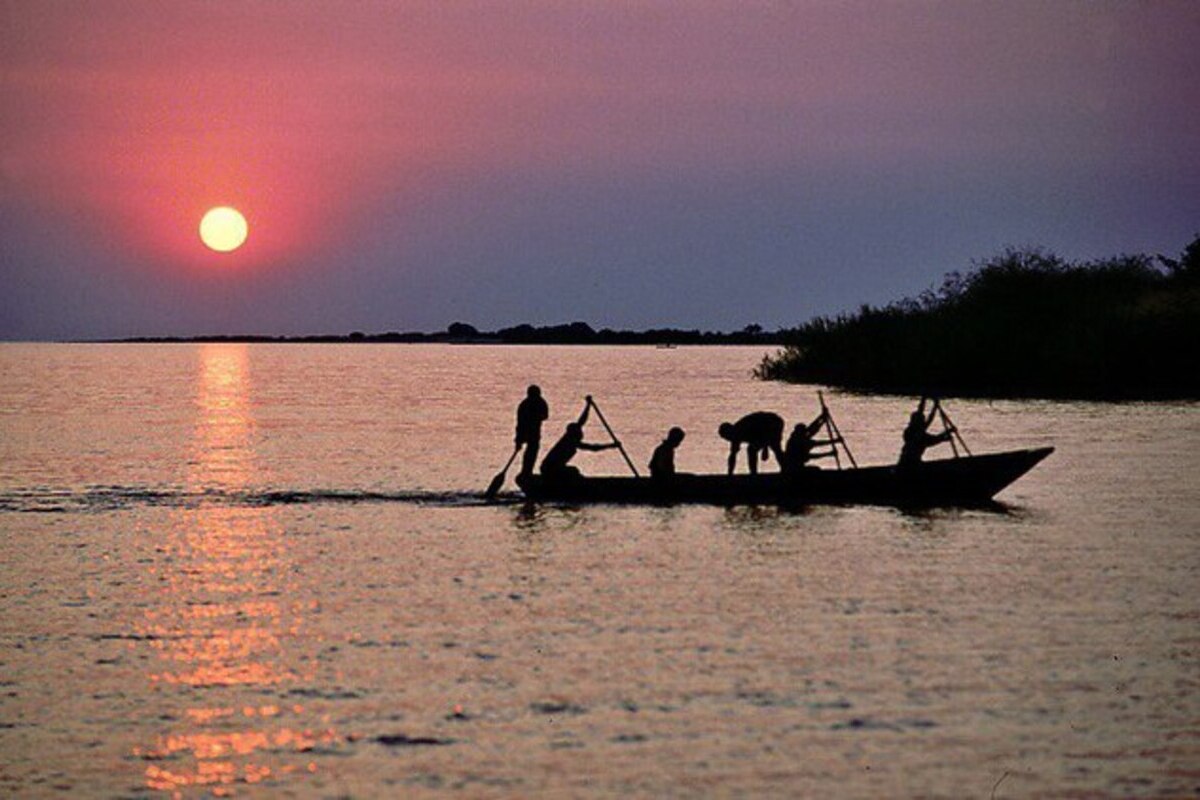Lake Tanganyika is not just an African lake but a true natural wonder that holds countless unique stories. Located along the borders of Tanzania, Zambia, Burundi, and the Democratic Republic of the Congo, it plays a significant geographical, biological, and historical role in Africa. Its depths conceal a remarkable ecosystem, and its shores have witnessed scientific discoveries and colonial struggles. In this article, you will discover fascinating facts about Lake Tanganyika that you may not have known.
- Lake Tanganyika is the second-deepest freshwater lake in the world after Lake Baikal. Its maximum depth exceeds 1,470 meters, and its average depth is around 570 meters. This makes it the deepest lake on the African continent. The lower layers of water remain still and are saturated with carbon dioxide and methane.
- Tanganyika is of tectonic origin, formed as a result of the earth’s crust splitting. It is part of the East African Rift system, which creates a distinctive landscape in the region. The lake stretches over 670 kilometers in length and reaches up to 50 kilometers in width. This makes it one of the longest lakes on the planet.
- More than 350 fish species live in Lake Tanganyika, with over half of them being endemic. The most famous are the cichlids, which are studied by ichthyologists and bred by aquarium enthusiasts worldwide. Fish in this lake evolved in isolation, making it a natural laboratory for biological science. Unique examples of microevolution and specialization can be observed here.
- The water in the lake is extremely clear and transparent, allowing for underwater observation without special equipment. The presence of algae and phytoplankton supports a stable ecosystem. The deep layers of water do not mix with the upper ones, creating specific living conditions. The water temperature remains stable throughout the year, providing a constant environment for aquatic species.
- Lake Tanganyika is a vital source of food for local populations, especially through fishing. Tens of thousands of tons of fish are caught here annually for both local consumption and export. The main commercial species include tilapia, the sardine-like kapenta, and various types of catfish. Fishing is not only an economic activity but also a cultural tradition for lakeside communities.
- Surrounding the lake are numerous national parks and nature reserves that protect the local flora and fauna. The most famous is Mahale Mountains National Park, home to one of the largest wild chimpanzee populations. The remoteness of these areas helps preserve their pristine natural condition. Tourists visiting the parks can observe wildlife in its natural habitat.
- Lake Tanganyika has historical importance as a site of colonial rivalry among Germany, Belgium, and Britain. Naval battles occurred on the lake during World War I between colonial powers. In 1915, British forces conducted a bold operation to transport boats through the jungle and capture German ships. This became one of the most unusual episodes of the war in Africa.
- The name Tanganyika comes from the Bantu language and roughly translates as great water spreading across a plain. It reflects the reverence local communities have for the lake. Today, the term Tanganyika is also associated with a historical region that existed as an independent state before uniting with Zanzibar to form Tanzania. Thus, the lake holds both geographical and political significance.
- Crocodiles, hippos, aquatic snakes, and numerous bird species inhabit the lake. The richest biodiversity is found in the swampy areas near the shore, which act as natural water filters. During bird migrations, thousands of birds stop at the lake, making it a critical station on Africa’s migratory routes. Ornithologists consider Tanganyika a unique site for observing rare bird species.
- One of Tanganyika’s distinct features is the presence of numerous hot springs and underwater geothermal vents. These sources release minerals into the water, affecting its chemical composition. This process supports biological balance and fosters the development of unique microorganisms. Some of the springs are believed to have healing properties and are used by locals for wellness purposes.
- Only one major river flows out of Lake Tanganyika — the Lukuga River. It connects the lake to the Congo River and eventually to the Atlantic Ocean. Unlike most lakes, which have multiple inflows and outflows, Tanganyika has a very limited drainage system. This contributes to the lake’s unique hydrological character and ecosystem stability.
- Tanganyika is one of the few ecosystems where the evolution of fish can be studied in near-total isolation. Due to the depth and separation of the lake, many species have no equivalents in other bodies of water. This makes the lake an invaluable resource for research in genetics, biology, and environmental change. Numerous international scientific institutions conduct fieldwork here.
These incredible facts about Lake Tanganyika help us better understand the uniqueness of this natural body of water. The lake impresses with its scale, biodiversity, and historical depth. Its waters sustain not only nature but also the culture, economy, and way of life of the people living along its shores. Tanganyika remains one of Africa’s greatest natural treasures, worthy of preservation and continued exploration.





